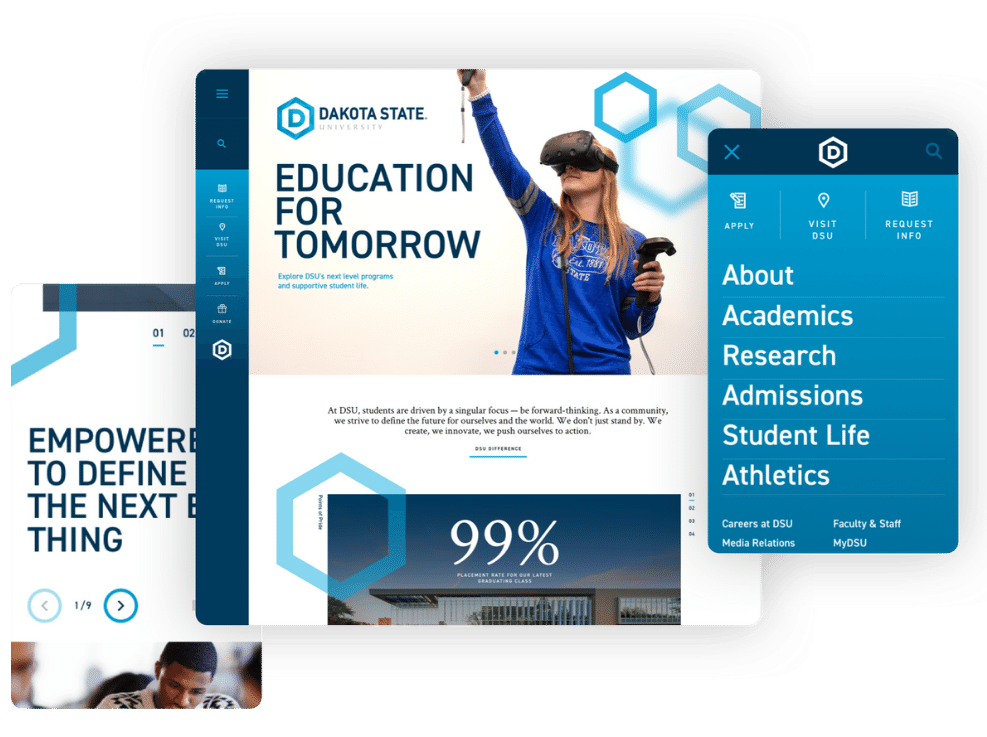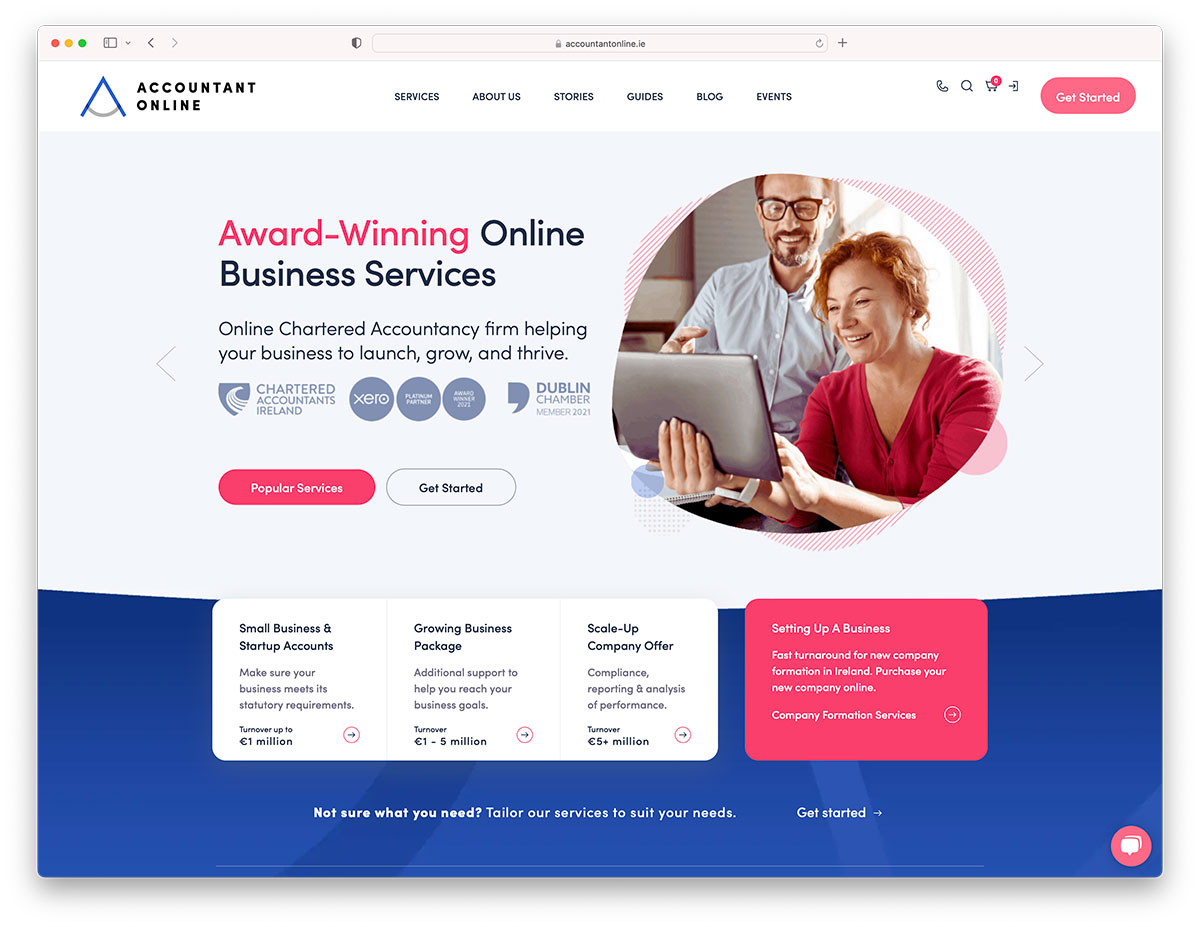Modern Site Layout That Captures Attention and Converts
In an increasingly electronic landscape, modern-day internet site design has actually emerged as an essential factor in recording user interest and driving conversions. By purposefully using aesthetic power structure, receptive formats, and involving interactive elements, developers can create experiences that not only draw in visitors yet likewise help with purposeful communications. Furthermore, efficient call-to-action methods play an essential function in leading customers towards wanted results. As we explore these necessary parts, it ends up being clear that understanding their interaction can substantially influence a web site's efficiency and customer contentment. What are the key aspects that absolutely make a difference?
Importance of Visual Power Structure
Visual hierarchy is an essential component in website layout, as it overviews users' attention and boosts their total experience. By purposefully arranging content, developers can direct individuals to the most important details initially, thereby boosting involvement and boosting usability.
Including a rational circulation in content arrangement is vital; for instance, putting one of the most important info at the top of a web page fosters immediate recognition. Consistent usage of typography, such as varying font sizes and styles, aids establish a clear web content structure. This company not only aids in navigating however also builds depend on, as users really feel more comfortable when they can easily find what they are searching for.
Eventually, a well-executed aesthetic pecking order not only improves aesthetic charm but additionally dramatically impacts individual behavior. By prioritizing important elements and guaranteeing a smooth experience, developers can properly transform site visitors right into customers, reinforcing the value of this foundational style concept in contemporary internet site advancement.
Responsive Style for All Tools
Developing a smooth experience across different devices is essential in today's digital landscape, where users access sites from desktops, tablets, and smartphones alike. Receptive layout is a vital method that ensures web sites adjust fluidly to different screen resolutions, dimensions, and alignments. By utilizing versatile grids, pictures, and CSS media questions, developers can create designs that keep aesthetic stability and performance, no matter of the tool being used.
The significance of receptive layout expands beyond aesthetic appeals; it straight affects customer engagement and conversion prices. A web site that operates well on all tools urges longer brows through and lowers bounce prices, as customers are more probable to engage with material that is easy to browse. Additionally, online search engine, specifically Google, prioritize mobile-friendly websites in their rankings, making responsive style an essential part of search engine optimization (SEO)
Including receptive design not only boosts user experience but likewise streamlines the advancement procedure. By creating a solitary site that functions across tools, services can conserve time and sources contrasted to establishing different mobile and desktop variations. Inevitably, responsive layout is an essential method for modern-day internet site layout, guaranteeing ease of access and fulfillment for all customers, no matter their tool.
Engaging Interactive Elements
While a responsive style lays the groundwork for a useful internet site, incorporating engaging interactive aspects is essential for recording customer interest and fostering deeper links. Website Design. Interactive components, such as animations, quizzes, and clickable infographics, produce a more dynamic user experience, urging site visitors to spend more time on the website
Integrating interactive attributes can likewise direct customers through complex details, making it easier to absorb content. For example, interactive sliders can show item variations, while ingrained video clips can offer presentations or testimonies that resonate more than static photos or text. In addition, gamification strategies, like incentives for involving or completing jobs with content, can enhance individual motivation and retention.
Efficient use of interactive elements not only enriches the individual experience but can additionally lead to greater conversion prices. It is essential to balance interactivity with efficiency; overly intricate attributes might prevent site speed, adversely affecting individual complete satisfaction.
Streamlined Navigation Practices
Effective navigating is a foundation of any type of effective website, as it directly affects user experience and web content accessibility. Structured navigation practices make sure that users can conveniently find information, boosting their communication with the website. A well-structured navigating menu ought to be simple and user-friendly, commonly including a minimal variety of primary classifications to stay clear of frustrating visitors.
To accomplish structured navigating, developers ought to prioritize a hierarchical structure that practically arranges content. Implementing breadcrumb tracks can provide users with context concerning their present location within the site, permitting index for smooth backtracking. Furthermore, utilizing drop-down menus can successfully preserve space while still providing access to subcategories.
Receptive design is crucial, as navigation ought to be useful across all gadgets (Website Design). Mobile users, particularly, gain from touch-friendly menus and retractable areas that preserve usability without compromising looks

Efficient Call-to-Action Techniques
A well-crafted call-to-action (CTA) is vital for leading individuals towards desired end results on a website, as it encourages them to involve with material or make an acquisition. To maximize their performance, CTAs should be clear, compelling, and tactically positioned throughout the website.
First, make use of action-oriented language that Source interacts urgency or worth, such as "Start," "Join Now," or "Insurance claim Your Discount." This language not only encourages customers however likewise establishes clear expectations about the following actions.
2nd, take into consideration layout elements; CTAs ought to stand out visually via contrasting colors, sufficient whitespace, and popular positioning. A button that is very easy to see and click boosts the chance of user communication.
In addition, individualizing CTAs based upon customer habits or demographics can dramatically boost involvement. Customized messages resonate extra with customers, driving higher conversion rates.

Conclusion
These elements jointly improve individual experience, guaranteeing that visitors remain involved and inspired to explore material additionally. By prioritizing these design concepts, services can significantly enhance user retention and conversion rates, ultimately leading to greater success in the next digital landscape.
In a significantly electronic landscape, modern website design has actually emerged as a critical factor in catching individual attention and driving conversions.Visual pecking order is a critical component in web site style, as it overviews customers' focus and boosts their overall experience.The relevance of receptive layout extends beyond aesthetic appeals; it directly impacts customer engagement and conversion rates.Including receptive layout not just enhances customer experience but also improves the advancement process. Ultimately, receptive style is a fundamental method for contemporary web site design, making sure ease of access and satisfaction for all users, no matter of their gadget.